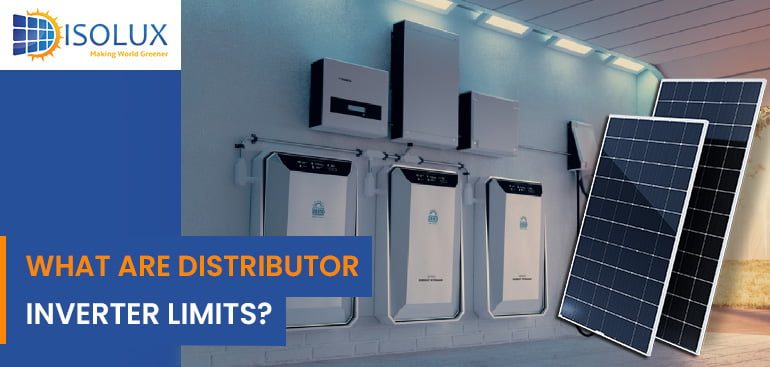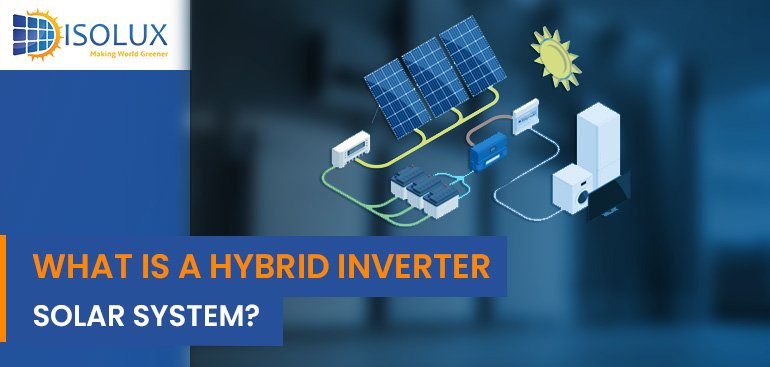When considering installing solar panels for your home or company, you may come across the term ‘distributor inverter limits.’ Because of these constraints, you may even be advised that you cannot have the size system you desire. It’s understandable for someone new to solar to be sceptical of these constraints. Why limit the generation of clean renewable energy you can place in your home? What is causing this? Certainly, it is better for the environment to install the largest solar system possible.
What are Distributor Inverter Limits?
A distributor is a company that owns and operates the poles and wires that supply power to your home. These distributors are correctly referred to as ‘Distribution Network Service Providers.’ Because DNSPs are localized monopolies, no matter where you live in Australia, there will only be one DNSP for your location.
DNSPs limit the amount of surplus solar electricity that consumers can export to the grid. These limits differ depending on the distributor, with some being more generous than others. Furthermore, depending on the capacity of the grid infrastructure near you, more strict export limits may be imposed on your property. Before you install solar panels or a battery, your DNSP must approve the connection of your proposed system to the grid. This pre-approval process is usually handled on your behalf by your Solar installer.
Most network distributors will allow the requested system size as long as it falls within their pre-set boundaries. These limits are determined by whether your property has a single-phase or three-phase electrical supply. The network distributor may occasionally respond with an export limit on the quantity of solar you can send to the grid. While you will still be able to install solar, you will not be able to export all of your excess solar to the grid. In the worst-case scenario, you won’t be able to export anything.
Why Do Export Limits Exist?
The rules governing the operation of the national electrical grid were established roughly 25 years ago. Electricity went just one way back then, from massive, centralized generators (often coal-fired power plants) to our houses and businesses. The concept of two-way power flow was unheard of! But, of course, things have changed.
Electricity flow in both directions is increasingly the norm. Over 3 million Australian residences already have solar panels, making Australia the world leader in rooftop solar installations. That’s fantastic, of course, but our national electrical grid’s old infrastructure is failing to keep up. As a result, there are greater “traffic jams” on the grid, especially on bright days when millions of rooftop solar systems are putting power back into the grid. This overloads the grid, resulting in poor power quality and even power outages.
Network distributors place restrictions on people’s ability to install solar systems of a certain size and the volume of solar electricity that can be exported back to the grid in order to prevent this from happening. Export restrictions are a crude way to deal with grid traffic congestion, but they are the only weapon available to DNSPs at the moment. The good news is that regulatory reforms are being implemented that should assist to address this issue.
What you can do if your Distributor Imposes an Export Limit
If your export is restricted, it may not be for the foreseeable future. DNSPs are beginning to modernize their infrastructure. Some DNSPs, such as Powercor, are contacting export-restricted homes to inform them that their export limit has been lifted.
Some persons with export restrictions replied by purchasing a battery. This will prevent any of your solar electricity from being lost. Instead, it is stored in the battery for use by your household in the evenings, at night, and on days when the sun is not shining.
Due to an export limit, you will not be paid as much – if at all – for your solar exports. However, with the average feed-in tariff in Australia presently being barely 7 cents per kilowatt hour, it is not worth worrying about. Getting authorized for the feed-in credit should be regarded as a bonus rather than the main goal.
The greatest method to save money with solar these days is to use as much of the electricity generated by your system at the time it is produced. Most solar-powered households should aim for 75% self-sufficiency. This is possible because of current inverters’ sophisticated Wi-Fi monitoring, as well as timers and Wi-Fi-enabled electrical household products (such as reverse cycle air conditioners) that can be managed remotely via an app.
What the Future Holds for Inverter Limits
Every week, we talk about solar with hundreds of households and companies. People desire to change, according to what we’ve heard. They want more clean solar energy to be fed back into the grid to replace filthy electricity generated by coal-fired power plants. They also seek a fair price for their solar exports and more government assistance for infrastructural improvements.
The government is beginning to recognize this yearning for change, and this is beginning to translate into action at the DNSP level. For example, in 2021, Powercor launched a 5-year infrastructure investment plan that is being implemented throughout the Powercor territory. As a result, export restrictions are gradually being relaxed for affected people and enterprises.
As the Australian Energy Market Commission’s latest rule amendments take effect, expect to see a gradual lowering of export limits over the whole National Electricity Network in the coming years. This is wonderful news for solar families and for the transformation of our national electrical network to 100% renewables.
Conclusion:
Get in touch with Isolux Solar for residential and commercial solar panel systems. We are happy to assist and provide an obligation-free quote.
Read Next Blog:




